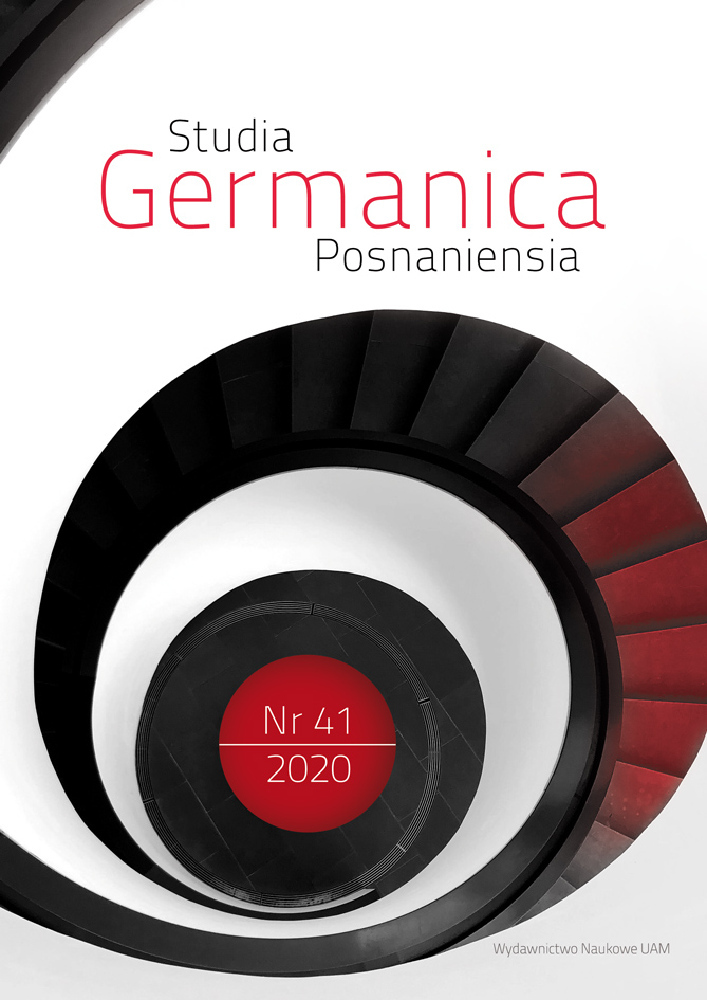Abstract
This article investigates current trends in the ways in which picture-books represent body diversity and body positivity. It examines how normative processes and cultural constructions of corporeality within Euro-Western society are deconstructed within and through picture-books. To this effect, this article will analyze a variety of picture-books that portray body diversity and connote the body in miscellaneous ways. The selected primary literature either foregrounds individual and cultural corporeality, explicitly and implicitly captures body diversity, or depicts female empower- ment. Additionally, the article considers nonfiction picture books which highlight that the current trend towards body diversity in the German picture-book market is a) relatively recent and b) that it has generated a veritable wave of body images.
References
Abraham, A. & Müller, B. (2010). Körperhandeln und Körpererleben. Einführung in ein ,brisantes Feld'. In A. Abraham & B. Müller (Hrsg.), Körperhandeln und Körpererleben. Multidisziplinäre Perspek- tiven auf ein brisantes Feld (S. 9-37). Bielefeld: transcript. https://doi.org/10.1515/9783839412275 DOI: https://doi.org/10.1515/9783839412275-001
Beckermann, A. (2008). Das Leib-Seele-Problem. Eine Einführung in die Philosophie des Geistes. Mün- chen: utb. https://doi.org/10.1515/9783110209938 DOI: https://doi.org/10.1515/9783110209938
Calì, D. & Bougaeva, S (2010). Wanda Walfisch (C. Steinitz, Übers.). Zürich: atlantis.
Daniels, E. & Roberts, T.-A. (2019). Programmatic Approaches to Cultivating Positive Body Image in Youth. In E. Daniels, M. Gillen & Ch. Markey (Hrsg.), Body Positive. Understanding and Improving Body Image in Science and Practice (S. 208-234). Cambridge: Cambridge University Press. https://doi.org/10.1017/9781108297653.010 DOI: https://doi.org/10.1017/9781108297653.010
Eismann, S. & Persson, A. (2020). Wie siehst du denn aus? Warum es normal nicht gibt. Weinheim: Beltz & Gelberg.
Fiske, A. (2019). Alle haben einen Popo (I. Kronenberger, Übers.). München: Hanser.
Frei, F. (2020). Periode ist politisch. Ein Manifest gegen das Menstruationstabu. München: Heyne. Fuchs, P. (2005). Die Form des Körpers. In M. Schroer (Hrsg.), Soziologie des Körpers (S. 48-72). Frankfurt a. M.: Suhrkamp.
von der Gathen, K. & Kuhl, A. (2021). AnyBody. Dick & dünn & Haut & Haar: das große ABC von unserem Körper-Zuhause. Leipzig: Klett Kinderbuch
Greite, C (2020). Rosa für Mädchen, Blau für Jungs. Über Buchgestaltung und Geschlechterklischees. kju.Winter, 2020/2021, 12-14. https://doi.org/10.1016/S1365-6937(20)30356-7 DOI: https://doi.org/10.1016/S1365-6937(20)30356-7
Horn, A. (2007). Einführung. In A. Horn (Hrsg.), Körperkultur. Bd. 1 (S. 11-39). Schorndorf: hofmann. Kurwinkel, T. (2020). Bilderbuchanalyse. Narrativik - Ästhetik - Didaktik. Tübingen: utb.
Leiß, J. (2020). Bilderbücher im inklusiven Literaturunterricht. Fallstricke und offene Fragen im Zusam- menhang mit multimodalem Erzählen. MiDU. Medien im Deutschunterricht, Jg.: 2, Heft 2, 1-18. Abgerufen von https://doi.org/10.18716/OJS/MIDU/2020.2.8.
Leone, A. & Johansson, B. (2020). Überall Popos (M. Osberghaus, Übers). Leipzig: Klett Kinderbuch. Melece, A. (2020). Der Kiosk. Zürich: atlantis.
von Merveldt, N. (2020). Sachbuch. In T. Kurwinkel & P. Schmerheim (Hrsg.), Handbuch Kinder- und Jugendliteratur (S. 189-200). Berlin: J.B. Metzler. https://doi.org/10.1007/978-3-476-04721-2_23 DOI: https://doi.org/10.1007/978-3-476-04721-2_23
Milles, K. (2011). Snippa: A Success Story of Feminist Language Planning. Gender & Language, Vol. 5.1, 89-109. https://doi.org/10.1558/genl.v5i1.89 DOI: https://doi.org/10.1558/genl.v5i1.89
Orange, R. (01. August 2015). Sweden invents a word for girls' genitals equivalent to 'willy' for boys. The Guardian. Abgerufen von https://www.theguardian.com/world/2015/aug/01/sweden-girls-genitals-fe-minist-invention-snippa-vagina.
Sanyal, M. (2020). Vulva. Die Enthüllung des unsichtbaren Geschlechts. Berlin: Wagenbach.
Sina, V. (2021). Comic, Körper und die Kategorie Gender. Geschlechtlich codierte Visualisierungsme- chanismen im Superheld_innen-Genre. In I. M. Krüger-Fürhoff & N. Schmidt (Hrsg.), CLOSURE. Kieler e-Journal für Comicforschung. Spezialausgabe 7.5: Körperkonstruktionen im Comic, 31-53. Abgerufen von https://www.closure.uni-kiel.de/closure7.5/sina.
Schößler, F. (2008): Einführung in die Gender Studies. Berlin: Akademie Verlag. https://doi.org/10.1524/9783050049649 DOI: https://doi.org/10.1524/9783050049649
Schroer, M. (2005). Zur Soziologie des Körpers. In M. Schroer (Hrsg.), Soziologie des Körpers (S. 7-45). Frankfurt a. M.: Suhrkamp.
Staiger, M. (2014). Erzählen mit Bild-Schrifttext-Kombinationen. In J. Knopf & U. Abraham (Hrgs.), Bil- derBücher. Bd. 1: Theorie (S. 12-23). Baltmannsweiler: Schneider Hohengehren.
Thiele, J. (2003). Das Bilderbuch. In J. Thiele & J. Steitz-Kallenbach, Handbuch Kinderliteratur (S. 70-98). Freiburg im Br.: Herder.
Tylka, T. (2019). Overview of the Field of Positive Body Image. In E. Daniels, M. Gillen & Ch. Markey (Hrsg.), Body Positive. Understanding and Improving Body Image in Science and Practice (S. 6-33). Cambridge: Cambridge University Press. https://doi.org/10.1017/9781108297653.002 DOI: https://doi.org/10.1017/9781108297653.002
Weiser, Ch. (2020). Wie kleine Kinder Bilder wahrnehmen. Prof. Dr. D. Bergs-Winkels im Interview. Kju, Winter 2020/2021, 6-8.
License
Copyright (c) 2021 Franziska Thiel

This work is licensed under a Creative Commons Attribution-NoDerivatives 4.0 International License.
